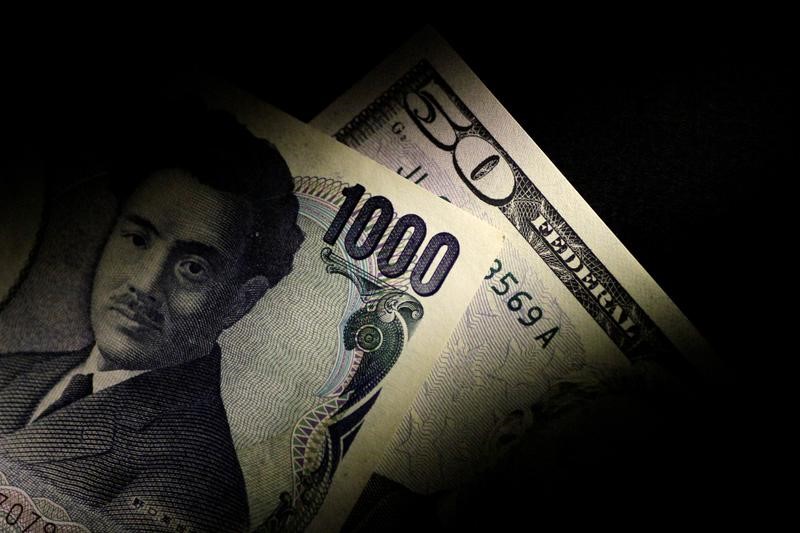 © Reuters.
© Reuters.
By Peter Nurse
Investing.com - The U.S. dollar soared in early European trade Thursday, climbing through a key psychological level versus the Japanese yen as the Bank of Japan maintained its very accommodative monetary policy stance.
At 3:10 AM ET (0710 GMT), the US Dollar Index, which tracks the greenback against a basket of six other currencies, traded 0.4% higher at 103.400, climbing to a five-year high.
Additionally, USD/JPY rose 1.5% to 130.30, bursting through the 130 level, widely seen as a psychologically-important barrier, to levels not seen since 2002.
This follows the Bank of Japan adding to its recent round of bond purchases, offering to buy an unlimited amount of 10-year government bonds, in a bid to keep a lid on benchmark yields.
The Japanese central bank also kept its interest rate steady at -0.10%, suggesting it is no closer to tightening its monetary policy as it continues to support its domestic economy. This is in direct contrast to the stance of the U.S. Federal Reserve, which has already begun tightening policy, and is widely expected to lift interest rates at least 50 basis points next week.
There had been some speculation the Bank of Japan might react to the weakness in its currency, but the central bank essentially doubled down on its low-yield policy.
“We continue to highlight how FX intervention would not be straightforward and would require coordination with other G10 countries, especially with the Fed/Treasury,” said analysts at ING, in a note.
The Fed’s next two-day policy meeting starts Tuesday, but the release later Thursday of U.S. GDP data could also impact market sentiment. The market is expecting growth of 1.1% in the first quarter, a slowdown from the 6.9% growth seen during the previous quarter, but the risk is to the downside after the U.S. trade deficit hit a record high and implied a large drag from net exports.
Elsewhere, EUR/USD fell 0.3% to 1.0519, falling to a five-year low, bringing the single currency’s losses for the month to around 5% so far, its worst since early 2015.
This follows the decision of Russia to halt gas flows to Poland and Bulgaria from Wednesday amid a standoff over fuel payments, raising fears about Europe’s energy security.
This move is likely to make the European Central Bank reluctant to tighten aggressively, leaving the single currency vulnerable given how much further down the tightening cycle the Fed is.
Similarly, GBP/USD dropped 0.1% to 1.2533, as traders continue to unwind bullish positions ahead of next week’s Bank of England meeting amid concerns the U.K. central bank will pause its tightening cycle after weak retail sales figures.
USD/CNY rose 0.7% to 6.604, weighed by the spreading of its Covid outbreak to Beijing, the nation’s capital, while AUD/USD rose 0.22% to 0.7142 with the Australian currency retaining strength after the previous session's strong inflation release pointed to interest rate hikes even amid concerns a slowdown in China will reduce demand for its natural resources.

